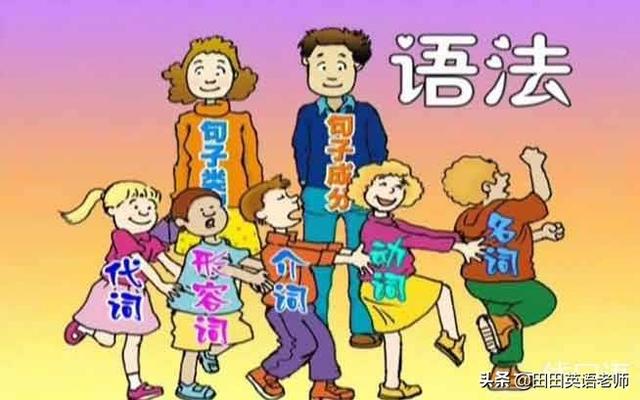
原标题:小学英语语法常识汇总
语法常识
1 名词:名词单复数,名词的格
(一)名词单复数
- 正常的状况,直接加-s,如:book-books, bag-bags, cat-cats, bed-beds
- 以s. x. sh. ch结束,加-es,如:bus-buses, box-boxes, brush-brushes, watch-watches
- 以“子音字母+y”结束,变 y 为 i, 再加-es,如:family-families, strawberry-strawberries
- 以“f 或 fe”结束,变 f 或 fe 为 v, 再加-es,如:knife-knives
- 不规矩名词复数:
- man-men,
- woman-women,
- policeman-policemen,
- policewoman-policewomen,
- mouse-mice
- child-children,
- foot-feet,
- tooth-teeth,
- fish-fish,
- people-people,
- Chinese-Chinese,
- Japanese-Japanese
- 不可数名词的复数便是原形:
- paper,juice, water, milk, rice, tea
(二)名词的格
- (1) 有生命的东西的名词一切格:
- a) 奇数后加 's 如: Lucy's ruler, my father's shirt
- b) 以s 结束的复数名词后加 ’ 如: his friends' bags
- c) 不以s 结束的复数后加's children's shoes
- 并排名词中,如果把 's加在最终一个名词后,表明共有, 如:
- Tom and Mike's car 汤姆和迈克共有的小汽车
- 要表明一切物不是共有的,应分别在并排名词后加's, 如:
- Tom's and Mike's cars 汤姆和麦克各自的小汽车
- (2) 表明无生命东西的名词通常用“of +名词”来表明一切联系:
- 如: a picture of the classroom a map of China
2 冠词:不定冠词,定冠词品种
(1) 不定冠词:a / an a unit / an uncle
元音最初的可数名词前用an :
an egg / an apple / an orange
(2) 定冠词:the
the egg / the plane
2. 用法:
定冠词的用法:
- 特指某(些)人或某(些)物:The ruler is on the desk.
- 复述上文说到的人或物:He has a sweater. The sweater is new.
- 说话两边都知道的人或物:The boys aren't at school.
- 在序数词前:John's birthday is February the second.
- 用于固定词组中:in the morning / afternoon / evening
不必冠词的状况:
- 专有名词前:China is a big country.
- 名词前有定语:this , that , my , your , some, any , no 等:
- This is my baseball.
- 复数名词表明一类人和事:Monkeys can't swim. They are teachers.
- 在节日,日期,月份,季节前:Today is Christmas Day. It's Sunday.
- 一日三餐前:We have breakfast at 6:30.
- 球类 棋类运动前:They often play football after class. He plays chess at home.
- * 但乐器前要用定冠词:I play the guitar very well.
- 学科称号前:My favorite subject is music.
- 在称号或头衔的名词前:This is Mr Li.
- 固定词组中:at noon at night by bus
3 代词、形容词、副词
代词:人称代词,物主代词
形容词,副词:比较级,第一流
(一)、形容词的比较级
1. 形容词比较级在语句中的运用:
两个事物或人的比较用比较级,比较级后边一般带有单词 than。比较级前面能够用more, a little来润饰表明程度。than后的人称代词用主格(白话中可用宾格)。
2. 形容词加er的规矩:
- 一般在词尾加er ;
- 以字母e 结束,加r ;
- 以一个元音字母和一个子音字母结束,应双写结束的子音字母,再加er ;
- 以“子音字母+y”结束,先把y变i,再加er 。
3. 不规矩形容词比较级:
good-better,
beautiful-more beautiful
(二)副词的比较级
1. 形容词与副词的差异(有be用形,有形用be;有动用副,有副用动)
- ⑴在语句中形容词一般处于名词之前或be动词之后
- ⑵副词在语句中最常见的是处于实义动词之后
2. 副词比较级的改变规矩根本与形容词比较级相同(不规矩改变:well-better, far-farther)
4 数词:序数词、基数词
(1) 1-20
one,two, three, our, five, six, seven, eight, nine, ten, eleven, twelve, thirteen, fourteen, fifteen, sixteen, seventeen, eighteen, nineteen, twenty
(2) 21-99先说“几十”,再说“几”,中心加连字符。
23→twenty-three,
34→thirty-four,
45→forty—five,
56→fifty-six,
67→sixty-seven,
78→seventy-eight,
89→eighty-nine,
91→ninety-one
(3) 101—999先说“几百”,再加and,再加末两位数或末位数;
586→five hundred and eighty-six,
803→eight hundred and three
(4) 1,000以上,先从右往左数,每三位数加一个“,”,第一个“,”前为thousand. 第二个“,”前为million,第三个“,”前为billion
1,001→ one thousand and one
18,423→ eighteen thousand four hundred and twenty-three
6,260,309→ six million two hundred and sixty thousand three hundred and nine
750,000,000,000→ seven hundred and fifty bilion
序数词
(1) 一般在基数词后加 th
eg. four→fourth, thirteen→thirteenth
(2) 不规矩改变
one→first,
two→second,
three→third,
five→fifth,
eight→eighth,
nine→ninth,
twelve—twelfth
(3) 以 y 结束的十位整数,变 y 为 ie 再加 th
twenty→twentieth,
forty→fortieth,
ninety→ninetieth
(4) 从二十一后的“几十几”直至“几百几十几”或“几千几百几十几”只将个位的基数词变为序数词。
twenty-first,
two hundred and forty-fifth
基数词
基数词转为序数词的口诀:
基变序,有规矩,词尾加上-th.
一,二,三,特别记,词尾字母 t, d, d.
八去t, 九去e, ve要用f替。
ty 将 y变成 i,th 前面有个 e.
若是碰到几十几,前用基来后用序。
5 介词:常用介词:in, on, at, behind等
1. at 表明时刻概念的某一个点。(在某时刻、时刻、阶段等)。
at 1:00 (dawn,midnight , noon) 在一点钟(拂晓、午夜、正午)
2.on
1) 表明详细日期。
注:(1)关于"在周末"的几种表明法:
- at (on) the weekend在周末---特指
- at (on) weekends在周末---泛指
- over the weekend在整个周末
- during the weekend在周末期间
- (2)在圣诞节,应说 at Christmas? 而不说 on Christmas?
2) 在(刚……)的时分
On reaching the city he called up his parents.
一到城里他就给爸爸妈妈打了一个电话。
3.in
1) 表明"时段"、"时期",在大都状况下能够和 during 交换,前者着重比照,后者着重继续。
in (during) 1988 (December, the 20th century) 在一九八八年(十二月、二十世纪)
6 动词:动词的四种时态
(1) 一般现在时:
一般现在时的构成
- 1. be动词:主语+be (am, is, are)+其它。如:I am a boy. 我是一个男孩。
- 2. 行为动词:主语+行为动词(+其它)。如:We study English. 咱们学习英语。
当主语为第三人称奇数(he, she, it)时,要在动词后加"-s"或"-es"。如:Mary likes Chinese. 玛丽喜爱汉语。
动词+s的改变规矩
- 1.正常的状况下,直接加-s,如:cook-cooks, milk-milks
- 2.以s. x. sh. ch. o 结束,加-es,如:guess-guesses, wash-washes, watch-watches, go-goes
- 3.以“子音字母+y 结束,变y为i, 再加-es,如:study-studies
(2) 一般过去时:
动词过去式详解 动词的过去式的构成规矩有:
A、规矩动词
- ① 一般直接在动词的后边加ed:如 worked , learned , cleaned , visited
- ② 以e结束的动词直接加d:如 lived , danced , used
- ③ 以子音字母加y结束的动词要改 y 为 i 再加 ed (此类动词较少)如 study – studied carry – carried worry – worried (留意play、stay不是子音字母加 y ,所以不属于此类)
- ④ 双写最终一个字母(此类动词较少)如 stopped
B、不规矩动词(此类词并无规矩,须熟记)小学阶段要记住以下动词的原形和过去式:sing – sang , eat – ate ,
see – saw , have – had , do – did , go – went , take – took , buy – bought , get – got , read – read ,fly – flew , am/is – was ,
are – were , say – said , leave – left , swim – swam , tell – told , draw – drew , come – came , lose – lost , find – found , drink – drank , hurt – hurt , feel – felt
(3) 一般将来时:
根本结构:
- ①be going to + do;
- ②will+ do. be going to = will
I am going to go swimming tomorrow(明日). = I will go swimming tomorrow.
(4) 现在进行时: am,is,are+动词现在分词
动词现在分词详解 动词的ing方式的构成规矩:
- ① 一般的直接在后边加上ing , 如doing , going , working , singing , eating
- ② 以e 结束的动词,要先去e再加ing,如having , writing
- ③ 双写最终一个字母的(此类动词很少)有:running , swimming , sitting , getting
句法
1.陈说句
(1) 必定句:是指用必定的口气来陈说的语句,如:
- I'm a student. She is a doctor. He works in a hospital.
- There are four fans in our classroom. He will eat lunch at 12:00. I watched TV yesterday evening.
(2) 否定句:含有否定词或表明否定含义词的语句,如:
- I'm not a student. She is not (isn't) a doctor.
- He does not (doesn't) work in a hospital. There are not (aren't) four fans in our classroom.
- He will not (won't) eat lunch at 12:00. I did not (didn't) watch TV yesterday evening.
2. 疑问句
一般疑问句:是指问询现实的语句,此类语句必须用“yes",或“no”来答复。
特别疑问句:以特别疑问词 (what , where , who , which , when , whose , why , how等) 最初引导的语句。此类语句应该问什么就答什么,不能用“yes /no”来答复。
3.There be句型
There be 句型与have, has的差异
- 1、There be 句型表明:在某地有某物(或人)
- 2、在there be 句型中,主语是奇数,be 动词用is ; 主语是复数,be 动词用are ; 如有几件物品,be 动词依据最*近be 动词的那个名词决议。
- 3、there be 句型的否定句在be 动词后加not , 一般疑问句把 be 动词调到句首。
- 4、there be 句型与have(has) 的差异:there be 表明在某地有某物(或人); have(has) 表明或人具有某物。
- 5、some 和 any 在 there be 句型中的运用:some 用于必定句, any 用于否定句或疑问句。
- 6、and 和or 在there be句型中的运用:and 用于必定句, or 用于否定句或疑问句。
- 7、针对数量发问的特别疑问句的根本结构是:
- How many + 名词复数 + are there + 介词短语?
- How much + 不可数名词 + is there + 介词短语?
- 8、针对主语发问的特别疑问句的根本结构是:
- What's + 介词短语
责任编辑:

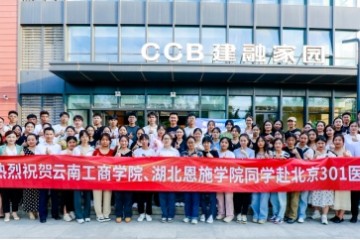 筑梦起航,医路向前——中国新高教集团举办2024届毕业生赴中国人民解放
筑梦起航,医路向前——中国新高教集团举办2024届毕业生赴中国人民解放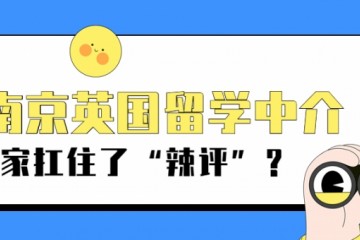 南京英国留学中介筛选指南,谁家扛住了“辣评”?
南京英国留学中介筛选指南,谁家扛住了“辣评”? SOS ! 高考后申请美国本科来得及,但是这些事情你不能放过!
SOS ! 高考后申请美国本科来得及,但是这些事情你不能放过! 天津传媒学院无终艺术馆揭幕开馆
天津传媒学院无终艺术馆揭幕开馆 ACAA聚焦数字科技,为行业发展注入新活力
ACAA聚焦数字科技,为行业发展注入新活力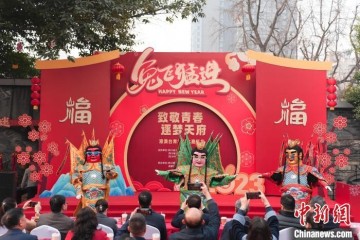 港澳台青年文化嘉年华在蓉举办
港澳台青年文化嘉年华在蓉举办 2023年度国考即将开考这些事项考生要了解
2023年度国考即将开考这些事项考生要了解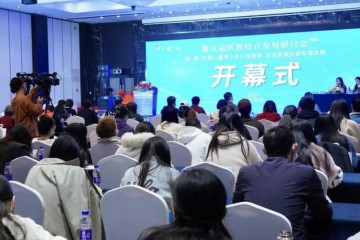 医教结合研讨会深度探讨孩子学习困难心理健康教育问题
医教结合研讨会深度探讨孩子学习困难心理健康教育问题